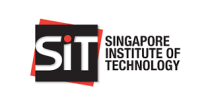
Singapore Institute of Technology (SIT)
Drupal, Acquia Cloud Platform

to build a web page
The Client
SIT offers applied degree programmes targeted at growth sectors of the economy with a unique pedagogy that integrates work and study. Applied research is weaved into its students’ learning experience, where they work on real industry problems and create solutions to meet industry needs. As part of the university’s advocacy for the work-learn continuum, SIT strives to instill within its students a culture of lifelong learning and places an emphasis on skills needed by the industry.
The Situation
SIT’s corporate communications team, which manages its web content, decided that they needed a flexible system with a user-centric design to accommodate its present content while anticipating future content expansion. The team wanted the ability to create microsites dynamically and to use the same Drupal core for easy maintenance and scalability.
The Challenge
- Inefficient Content Authoring Experience: Though the team was able to perform content edits on their own, adding additional or new functionalities and features was inefficient and inflexible. The layout control was lacking and there was inconsistency in design.
- Inconsistent Design Patterns: The team had an over-reliance on a limited number of Drupal page templates, stifling their ability to create new pages with engaging content. Brand consistency was greatly affected, creating the need for a design system that can integrate well with the upgraded Drupal 8 CMS.
- Multisite Migration Management: As SIT underwent a web revamp using Drupal 8 CMS, new content would need to be developed for the site. Existing content would also need to be retained and handled appropriately during migration.
In addition to using the new design system to migrate existing microsites, such as the Faculty and Professional Officers Directories to Drupal 8 CMS, SIT also needed flexibility, governance and fast time-to-launch for future microsites to be built on a single codebase.
The Solution
Acquia Cloud Platform emerged as the best solution to support SIT’s business needs. Acquia’s native support for Drupal multisite architecture meant that SIT is able to leverage one fully managed cloud that unifies platform updates and maintains security and compliance across its entire network of sites. This provides the ability for SIT to seamlessly manage multiple sites across the university’s divisions and stakeholders. With Acquia Cloud Platform, SIT was able to:
- Establish A New Design System: To ensure brand consistency and ease in development of new content and pages, SIT worked with its digital agency partner, Pixel Onion, and Acquia to develop its very first design system. This was created and developed based on the fundamental building blocks, UI patterns and SIT’s design rules. Integrated with Drupal 8 CMS, it gives SIT’s content editors greater autonomy to build content efficiently.
- Develop Its Layout Builder: To improve the authoring experience for content editors, a flexible and dynamic list of components in Layout Builder was developed, creating a Drupal 8 CMS that is able to support and create department sites faster and more efficiently than ever before.
The Results
By integrating a design system with Drupal 8 CMS, SIT has consistently been able to produce more engaging content across their web platforms. Having a unified design system provided SIT with a shared library of reusable components and guidelines, allowing its users to build web pages and create content much faster. The increased efficiency and consistency has enabled SIT to become more scalable and sustainable digitally. Previously, it used to take 1 to 2 days for SIT to build a page with HTML coding; now it takes less than 30 minutes to complete with built-in components.